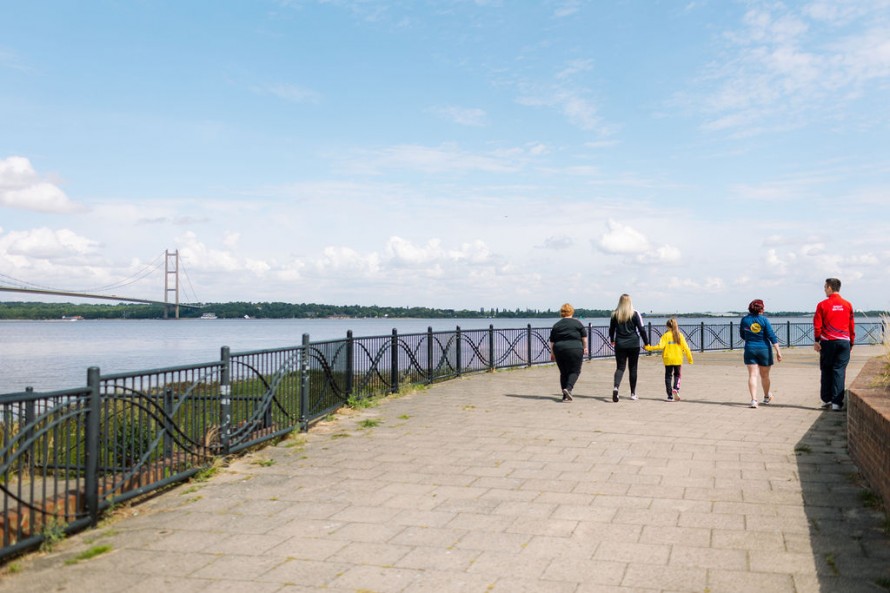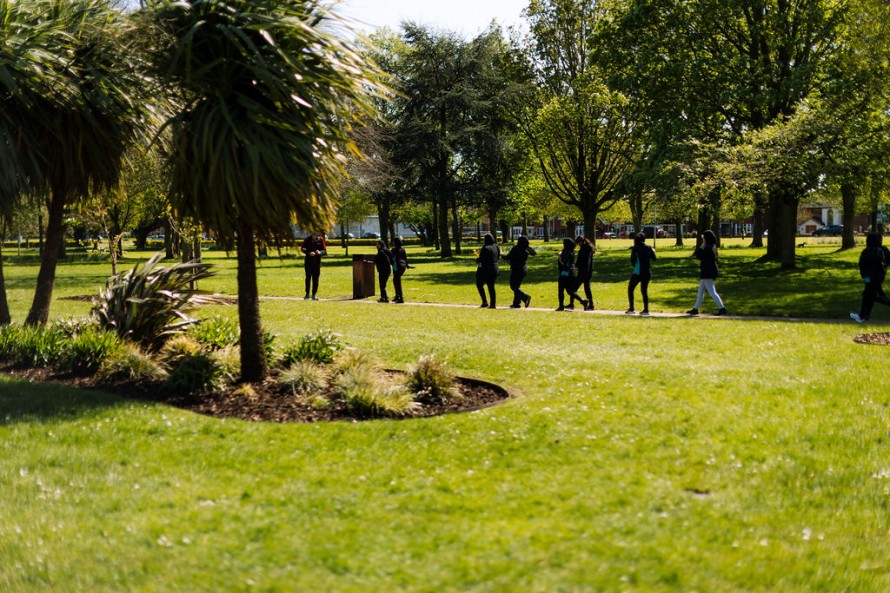


We all know the saying, if you build it, they will come.
But when it comes to physical activity, perhaps it should be: If you build it, they will move.
At Active Humber, we want people to think differently about how our neighbourhoods are designed, and how much those designs influence our health. That’s why we’re shining a light on Sport England’s Active Design Toolkit, a practical guide that helps planners, developers, and communities build places where being active is part of everyday life, not something to plan, pay for, or travel to.
The principle is simple: if we design movement and nature in from the start, everyone benefits.
Being active isn’t just about motivation, it’s about opportunity. Movement is a learned behaviour, shaped by the spaces around us.
Antony Forrester, our Head of Programmes and Projects, said:
“Growing up, I remember having to travel just to find a patch of grass big enough to kick a ball. My mum didn’t want us playing in the street, so we improvised: football against the wall, garden cricket, chalk long jump lines on the pavement. We found a way, but it wasn’t easy.
“Over time, that freedom disappeared. “No Ball Games” signs appeared, and cars slowly took over the spaces where children once played. From the late 80s onwards, that informal, everyday activity started to fade.
“We can bring that spirit back, but only if we design it in.”
When new developments are planned, the focus is usually on roads, schools, and shops. But what about the spaces that help us move, connect, and breathe?
Imagine a community where:
• Walking and cycling routes are safe, direct, and nature rich.
• Children can play close to home without cars speeding past.
• Parks, play areas, and shared spaces are part of the plan, not an afterthought.
• You step outside your door and feel connected to nature.
Biodiversity shouldn’t be something people drive to see, it should be part of daily life. Green corridors, ponds, wildflower verges, and community gardens can transform ordinary neighbourhoods into living spaces that support both people and wildlife.
This is what Active Design delivers: healthy, happy, nature-rich places where movement is easy, appealing, and accessible to everyone.

"I’ve spent nearly 30 years working in communities, yet I had no idea just how much physical activity influences long-term health. I genuinely wish I had understood earlier what I know now. I would have encouraged even more people, supported more families, and pushed harder for better-designed neighbourhoods that make movement the easy choice.
There is a line from GOV.UK that says it better than anything:
“If physical activity were a drug, we would refer to it as a miracle cure, due to the great many illnesses it can prevent and help treat.” (GOV.UK)
This is why physical activity must be accessible for everyone. Not as a luxury. Not as a scheduled session. But as something designed into the very places we live.
And when you look at the impact physical activity has on later life and mortality rates, it becomes clear: Active Design and Active Environments are not optional, they are essential.
For too long, planning has started with vehicle infrastructure. It’s time to reverse that.
Start with active design, then bricks and mortar, and only then think about cars. The most time and thought should go into making physical activity easy, attractive, and natural for everyone, especially in our most deprived communities, where the lack of safe, active spaces often leads to longer periods of ill health in later life.
I’ve seen this first-hand through decades of community work. Good design could have changed so many lives."
Put Active Design at the top of the list when building active, green, and connected places to ensure people experience the most benefits to their health, happiness and in their community. Because when we design for movement and nature, we design for life.
Learn more about Sport England’s Active Design Toolkit here.
Antony Forrester
Head of Programmes and Projects at Active Humber.
Antony Forrester
Head of Programmes and Projects at Active Humber.